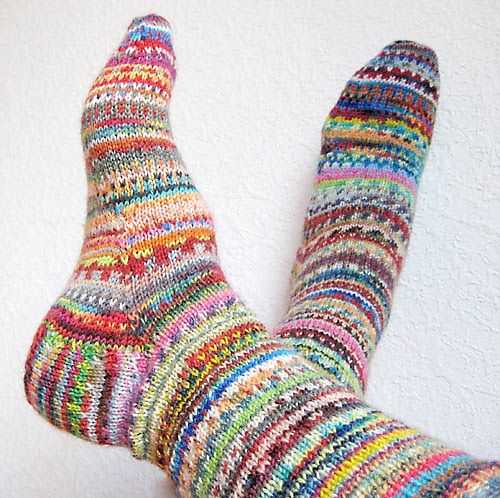
If you enjoy knitting and have a soft spot for colorful, cozy socks, then knitting patterns using sock yarn are perfect for you! Sock yarn is specifically designed for creating socks, with its unique combination of softness, durability, and stretch. However, its versatility extends beyond just socks. This lightweight and flexible yarn can be used to create a wide range of projects, from scarves and shawls to baby clothes and accessories.
One of the greatest advantages of knitting with sock yarn is the vast array of patterns available. Whether you’re a beginner or an experienced knitter, there is a pattern out there for you. From simple and repetitive stitch patterns to intricate lace and cable designs, there are endless possibilities to explore. Furthermore, sock yarn comes in a variety of different colors and colorways, allowing you to create truly unique and eye-catching projects.
Knitting with sock yarn also offers the opportunity to experiment with different stitches and techniques. You can explore the world of colorwork using stranded or intarsia knitting, or try your hand at lace knitting with delicate and intricate patterns. With sock yarn, you can push your knitting skills and create beautiful and complex projects that will impress even the most experienced knitters.
The versatility of sock yarn for knitting patterns
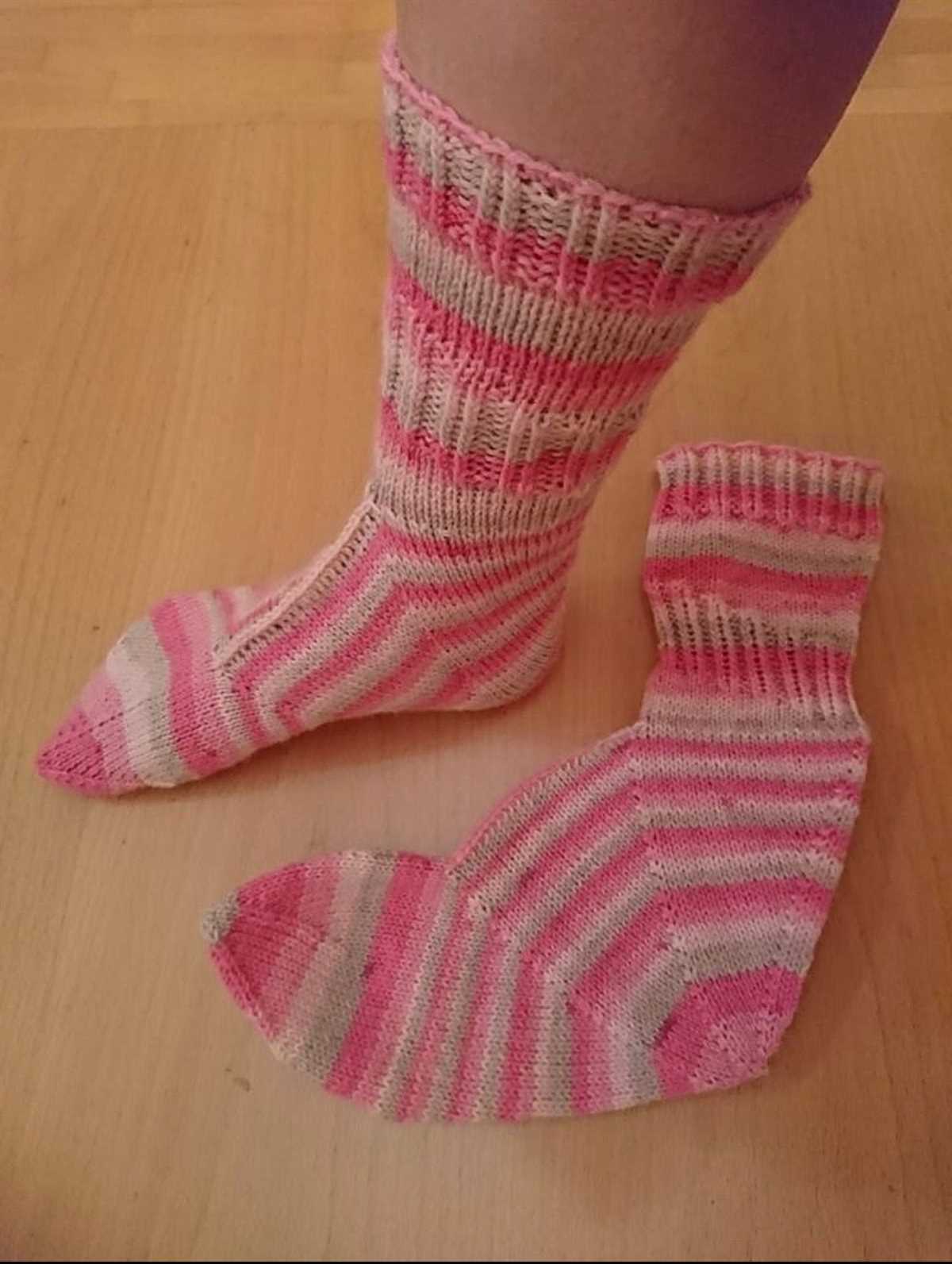
Sock yarn is a popular choice among knitters for its versatility. While it is primarily used for knitting socks, it can be used for a wide range of other projects as well. This makes it an ideal choice for knitters who want to get the most out of their yarn stash.
One of the main advantages of sock yarn is its durability. Socks are subjected to a lot of wear and tear, so the yarn used for them needs to be strong and long-lasting. This same durability makes sock yarn perfect for other items that will see a lot of use, such as hats, gloves, and scarves. Plus, with its fine gauge, it is also ideal for intricate lace patterns, adding a touch of elegance to any project.
Another great thing about sock yarn is its wide variety of colors and patterns. From simple solids to vibrant variegated yarns, there is something for every taste and project. Knitters can experiment with different color combinations and stitch patterns to create unique and personalized pieces.
Lastly, sock yarn is often made from a blend of fibers, such as wool, nylon, and sometimes even silk or alpaca. This blend of fibers gives the yarn its strength, durability, and softness. It also makes it suitable for a range of climates, as wool provides warmth while the addition of synthetic fibers adds breathability and moisture-wicking properties. This versatility makes sock yarn suitable for knitting projects all year round.
In conclusion,
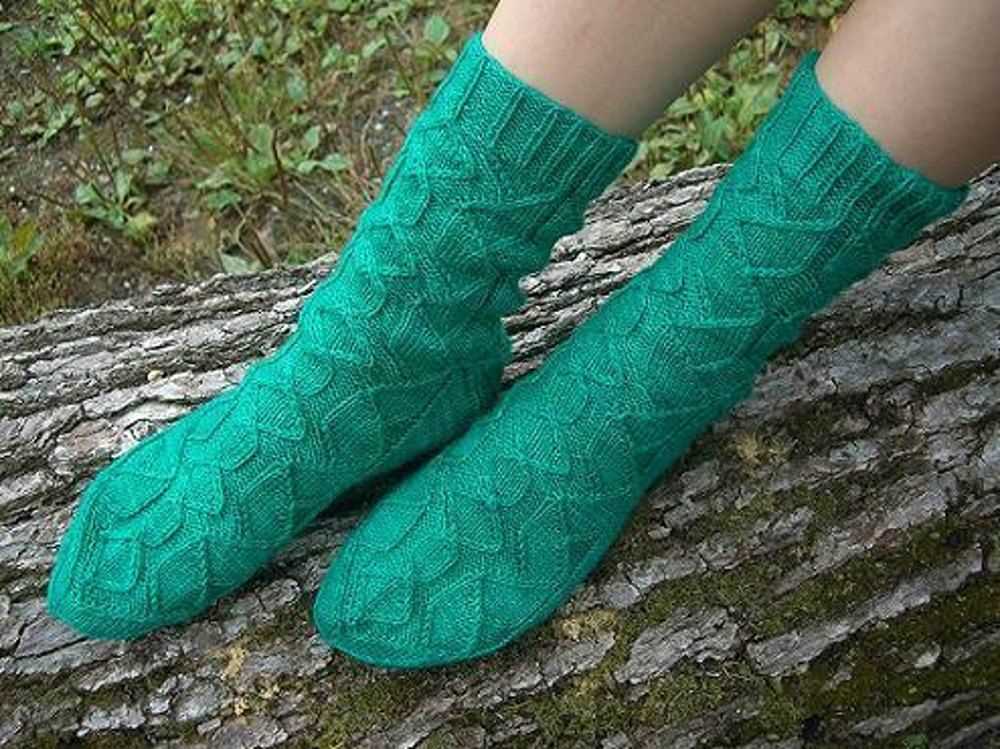
- Sock yarn is a versatile choice for knitting patterns, beyond just socks.
- It offers durability, making it suitable for items that will see a lot of use.
- The wide variety of colors and patterns allows for creativity and customization.
- The blend of fibers in sock yarn provides strength, softness, and suitability for various climates.
The History and Properties of Sock Yarn
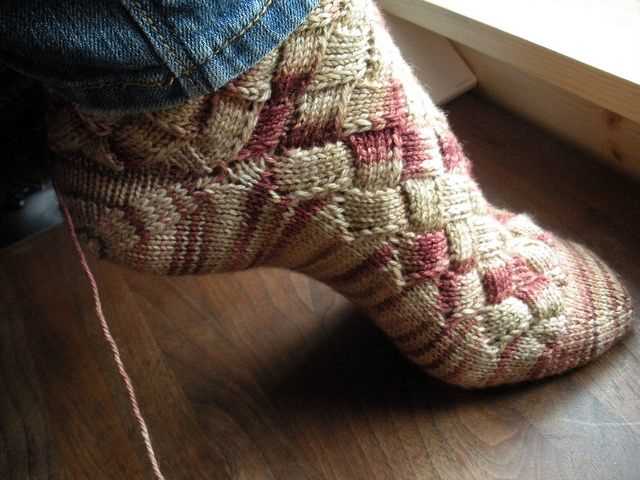
Sock yarn has a long and fascinating history. It was originally developed as a durable and resilient yarn specifically designed for knitting socks. Over the years, sock yarn has evolved to include a variety of fibers and blends, each offering its own unique properties. Today, sock yarn is not only used for making socks, but also for a wide range of other projects such as shawls, hats, and sweaters.
One of the key properties of sock yarn is its strength and durability. Socks are subjected to a lot of wear and tear, so sock yarn needs to be able to withstand constant use and frequent washing. Many sock yarns are made with a high twist, which helps to prevent the yarn from unraveling or becoming fuzzy over time. This ensures that knitted socks will last longer and maintain their shape and structure.
Sock yarn is also known for its softness and comfort. Many sock yarns are made with a blend of fibers such as merino wool, nylon, or bamboo, all of which provide a soft and luxurious feel against the skin. These fibers also offer breathability and moisture-wicking properties, which helps to keep feet dry and comfortable. Additionally, sock yarn is often treated with antibacterial or odor-resistant coatings, ensuring that socks stay fresh even after extended wear.
When it comes to choosing a sock yarn, there are a few factors to consider. The weight of the yarn, measured in terms of stitches per inch, will determine the thickness of the socks. Lighter weight yarns are suitable for making lightweight socks for warmer weather, while heavier weight yarns are more appropriate for cozy winter socks. The fiber content and blend will also affect the appearance and performance of the socks, so it’s important to choose a yarn that suits your preferences and needs.
Overall, sock yarn is a versatile and practical choice for knitters. Its history and unique properties make it the perfect yarn for creating durable, comfortable, and stylish socks, as well as a variety of other projects.
Different weights and blends of sock yarn
Sock yarn is specifically designed for knitting socks, but it is a versatile yarn that can be used for a variety of other projects as well. One of the main factors that differentiates sock yarn from other yarns is its weight. Sock yarn typically comes in three different weights: fingering weight, sport weight, and worsted weight. Fingering weight sock yarn is the most commonly used for knitting socks and is known for its fine, lightweight texture. Sport weight sock yarn is slightly thicker and provides a bit more warmth, making it a great choice for socks in colder climates. Worsted weight sock yarn is the thickest and warmest option, perfect for cozy winter socks.
In addition to weight, sock yarn also comes in various blends of fibers. The most common blend is wool and nylon, which provides durability and elasticity to the finished socks. Wool and nylon blend sock yarn is perfect for everyday wear and can withstand the constant friction against shoes and floors. Another popular blend is wool and bamboo, which adds a soft, silky feel to the yarn. Bamboo sock yarn is great for those with sensitive skin, as it is hypoallergenic and has moisture-wicking properties. There are also sock yarns available in cotton, acrylic, and other synthetic fibers, offering different levels of softness and breathability.
Fingering weight sock yarn is commonly used for knitting lacy patterns and delicate stitches, as it creates a lightweight and dainty fabric. Sport weight sock yarn is great for simple patterns and textured stitches, as it provides more definition and structure. Worsted weight sock yarn is perfect for cabled or colorwork patterns, as it creates a thick and cozy fabric that shows off intricate designs. Wool and nylon blend sock yarn is the go-to choice for durability and long-lasting socks, while wool and bamboo blend sock yarn offers a luxurious feel and comfort. Cotton sock yarn is ideal for warm weather socks, as it is breathable and lightweight.
- Fingering weight sock yarn – lightweight and perfect for lace
- Sport weight sock yarn – provides more warmth and structure
- Worsted weight sock yarn – thick and cozy, great for cables and colorwork
- Wool and nylon blend – durable and long-lasting
- Wool and bamboo blend – soft and silky, hypoallergenic
- Cotton sock yarn – breathable and lightweight
Choosing the right knitting pattern for sock yarn
When it comes to knitting with sock yarn, choosing the right pattern is essential to showcase the beauty and characteristics of the yarn. Sock yarn is typically lightweight and durable, making it perfect for knitting socks, but it can also be used for a variety of other projects such as shawls, scarves, and even lightweight sweaters.
When selecting a knitting pattern for sock yarn, it is important to consider the gauge and yardage requirements. Sock yarns can vary in weight, so it is crucial to find a pattern that matches the weight of your yarn. Additionally, make sure to check the yardage of the yarn to ensure you have enough for your chosen project.
When browsing patterns, consider the stitch pattern and complexity. Sock yarn can handle intricate stitch patterns and cables, so don’t be afraid to choose a pattern that showcases these details. However, if you prefer simpler designs, there are plenty of options available as well. Remember to take into account your knitting skill level and the amount of time you’re willing to invest in the project.
Consider the intended use of your project. If you’re knitting socks, look for patterns specifically designed for socks to ensure a comfortable fit and durability. If you’re knitting a shawl or scarf, consider patterns that highlight the drape and softness of the yarn. For lightweight sweaters or cardigans, choose patterns that work well with the drape and weight of the yarn.
Another factor to consider is the yarn’s colorway or variegation. Sock yarn often comes in a range of vibrant, self-striping, or speckled colorways, so choose a pattern that will complement and showcase the yarn’s unique characteristics.
Ultimately, the right knitting pattern for sock yarn is one that allows the yarn to shine while also meeting your project’s requirements and your personal preferences. With so many options available, take your time to browse patterns, read reviews, and consider your own skills and interests.
Considering the gauge and stitch pattern
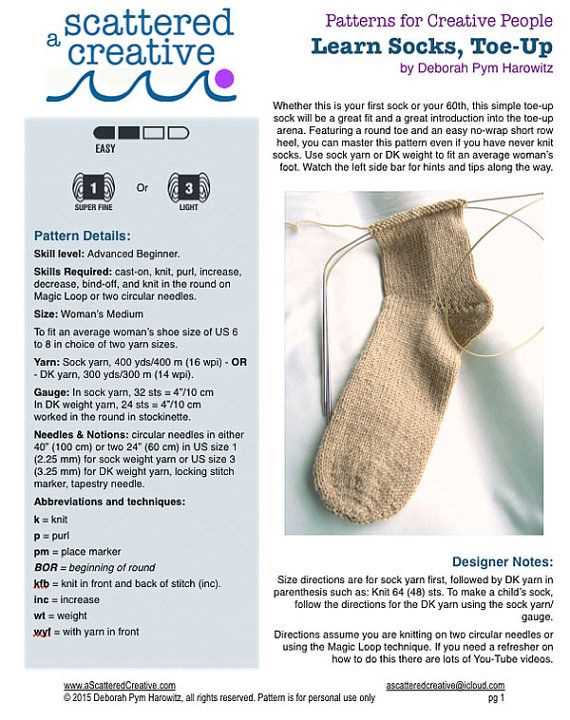
When knitting with sock yarn, it is important to consider the gauge and stitch pattern to ensure the best results for your project. The gauge refers to the number of stitches and rows per inch, which determines the overall size and fit of the finished piece. Different yarns and stitch patterns can have varying gauges, so it is essential to check the recommended gauge for your chosen pattern.
The stitch pattern you choose can also greatly impact the final outcome of your project. Some stitch patterns, like lace or cables, may require a looser gauge to fully showcase the design, while others, such as ribbing or stockinette, may require a tighter gauge for added structure and durability. It’s important to swatch and measure your gauge before starting your project to ensure it matches the recommended gauge in the pattern.
When selecting a stitch pattern for a project made with sock yarn, it’s also important to consider the desired drape and texture. Some stitch patterns create a more open and airy fabric, perfect for lightweight garments or accessories, while others create a denser and more substantial fabric, ideal for warm and cozy items like socks or hats. Consider the intended use of your project and the desired aesthetic to choose a stitch pattern that complements your vision.
- Swatch and measure your gauge to ensure it matches the recommended gauge in the pattern.
- Consider the desired drape and texture when selecting a stitch pattern.
- Some stitch patterns may require a looser or tighter gauge to showcase the design or add structure.
- Choose a stitch pattern that complements the intended use of your project and the desired aesthetic.
Exploring various sock knitting patterns
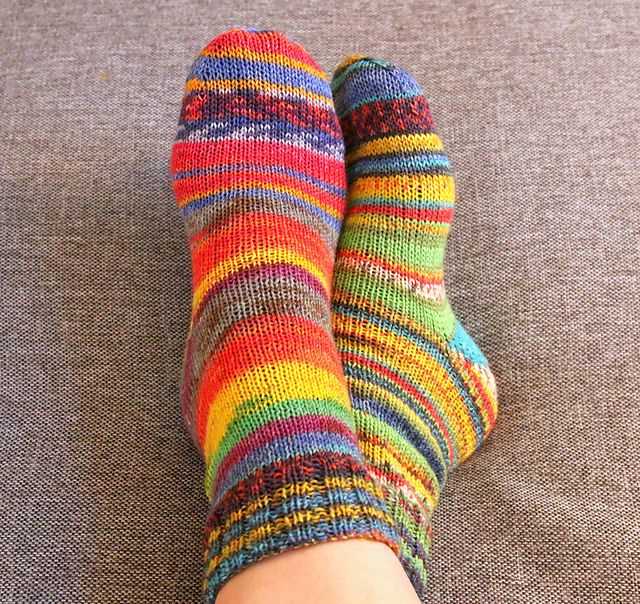
When it comes to knitting socks, the possibilities are endless. There are numerous knitting patterns available that can help you create beautiful and unique socks using sock yarn. Whether you prefer a simple, classic design or something more intricate, there is a pattern out there for everyone.
One popular pattern for sock knitting is the ribbed pattern. This pattern creates a stretchy and snug fit for your socks, making them comfortable to wear. The ribbed pattern can be as simple as knitting alternating rows of knit and purl stitches, or it can be more complex with multiple types of ribbing.
Lace patterns
If you’re looking for something more delicate and feminine, lace patterns can add an elegant touch to your socks. Lace patterns can range from simple eyelet designs to intricate lace motifs. These patterns usually involve yarn overs and decreases to create the lace effect, resulting in a breathable and airy fabric.
Another popular pattern for sock knitting is the cable pattern. Cables add texture and interest to your socks, making them stand out. The cable pattern involves crossing stitches over each other, creating a twisted look. This pattern can be done with a single cable or multiple cables, depending on the level of complexity you desire.
Colorwork patterns
Colorwork patterns are perfect for adding pops of color and excitement to your socks. Fair Isle and stranded knitting are popular techniques used in colorwork patterns. These patterns involve using multiple colors of yarn and switching between them to create patterns and designs. The possibilities are limitless when it comes to colorwork socks.
In conclusion, sock knitting offers a wide range of patterns to explore. Whether you prefer a classic ribbed design, delicate lace, intricate cables, or colorful colorwork, there is a pattern out there that will capture your interest and allow you to create beautiful socks using sock yarn.
Knitting socks with self-striping sock yarn
If you’re looking to add some excitement to your sock knitting, self-striping sock yarn is a great choice. With its vibrant colors and unique striping patterns, it can turn a simple pair of socks into a work of art. Self-striping sock yarn is specifically dyed and designed to create stripes as you knit, making it perfect for those who want to achieve professional-looking results without the hassle of changing colors.
One of the great things about self-striping sock yarn is that it allows you to experiment with different stitch patterns while still maintaining a cohesive look. You can try using simple knit or purl stitches to let the stripes take center stage, or you can incorporate more intricate stitch patterns to add texture and interest. The possibilities are endless when it comes to creating unique and personalized sock designs using self-striping sock yarn.
When working with self-striping sock yarn, it’s important to consider the length of the color repeats. Some yarns have shorter color repeats, resulting in more frequent stripe changes, while others have longer color repeats, resulting in larger, more distinct stripes. By choosing a yarn with your desired color repeat length, you can customize the look of your socks and create patterns that suit your personal style.
In addition to creating beautiful socks, self-striping sock yarn can also be used to add decorative touches to other knitting projects. You can use it to create colorful cuffs or edgings on hats, mittens, and scarves, or even incorporate it into larger projects like shawls or blankets. The versatility of self-striping sock yarn makes it a fantastic choice for knitters of all skill levels who want to add a touch of fun and personality to their work.
Techniques for creating striped socks
One of the most popular ways to add visual interest to your sock knitting projects is by incorporating stripes. Striped socks can be playful, colorful, and can showcase different stitch patterns in a unique way. Here are a few techniques you can use to create striped socks using sock yarn:
1. Self-striping yarn
One of the easiest ways to create stripes in your socks is by using self-striping yarn. This type of yarn is dyed in a way that creates stripes as you knit, allowing you to easily achieve a striped pattern without having to switch between different colors. Simply knit your sock using self-striping yarn and watch the stripes appear as you go!
2. Alternating two different colors
If you prefer more control over the color placement in your striped socks, you can alternate between two different colors of sock yarn. To create clean, even stripes, it’s important to ensure that you carry the unused color up the inside of the sock to avoid loose floats. This technique allows you to experiment with different color combinations and create unique striped designs.
3. Intarsia technique
For more advanced sock knitters, the intarsia technique can be used to create intricate striped patterns. This technique involves knitting with separate balls of yarn for each stripe, carefully joining and twisting the yarns at the color changes. While the intarsia technique requires more attention and skill, it allows you to create complex and eye-catching striped designs on your socks.
4. Modular knitting
Modular knitting is another technique that can be used to create striped socks. This technique involves knitting individual modules or squares in different colors and then joining them together to create the final sock. With this method, you can create stripes of various widths and experiment with different color combinations to achieve the desired striped effect.
Whether you choose to use self-striping yarn, alternate colors, use intarsia technique, or try modular knitting, incorporating stripes into your sock knitting projects is a fun and creative way to add some extra flair to your finished socks. So grab your sock yarn and get ready to knit some stylish striped socks!
Patterns and inspiration for self-striping sock yarn
If you’re a fan of sock knitting and love the vibrant colors of self-striping yarn, then you’re in for a treat! There are plenty of patterns and inspiration available to help you create stunning socks using self-striping sock yarn. Whether you’re a beginner knitter or an experienced one, there’s something for everyone to enjoy.
One popular pattern that works well with self-striping sock yarn is the classic vanilla sock pattern. This simple yet versatile pattern allows the vibrant colors of the yarn to take center stage, creating beautiful stripes as you knit. The beauty of this pattern is that it’s adjustable to any foot size and can be easily customized with different stitch patterns or ribbing.
For those who enjoy a bit of texture and pattern, there are also many options available. Patterns like the “Zigzag Socks” or “Lace Panel Socks” incorporate lace or textured stitch patterns that complement the striping of the yarn. The combination of these elements adds an extra level of visual interest to your socks.
If you’re looking for something a bit more fun and whimsical, there are patterns available that utilize self-striping yarn to create unique designs. The “Rainbow Socks” pattern, for example, creates a gradient effect using different shades of self-striping yarn, resulting in a sock that looks like a rainbow. This pattern is sure to brighten up your day and add a touch of playfulness to your outfit.
No matter what type of pattern you choose, self-striping sock yarn is a fantastic way to add a pop of color and excitement to your sock knitting projects. With its easy-to-use nature and endless possibilities for creativity, it’s no wonder that self-striping sock yarn is a favorite among knitters. So grab your needles and some self-striping sock yarn, and get ready to create socks that are as unique and beautiful as you are!
Using variegated sock yarn for unique designs
Sock yarn is a popular choice for knitting projects due to its durability, softness, and versatility. One way to create unique and eye-catching designs using sock yarn is by using variegated yarn. Variegated yarn is yarn that has been dyed in multiple colors, resulting in a beautiful blend of hues.
When choosing a variegated sock yarn for your project, it’s important to consider the color palette and distribution of colors. Some variegated yarns have long color repeats, while others have short and random color changes. The color distribution can greatly impact the overall look of your design, so it’s helpful to experiment and swatch before committing to a pattern.
Variegated yarn can be used to create stunning designs such as:
- Stripes: By pairing a variegated yarn with a solid color yarn, you can create beautiful striped patterns. The variegated yarn adds an element of visual interest and depth to the stripes.
- Colorwork: Variegated yarn can also be used in colorwork projects, adding a unique and unpredictable element to the design. It can be particularly effective in Fair Isle or stranded knitting, where the variegated yarn can create a playful and vibrant effect.
- Lace: Variegated yarn can add a stunning dimension to lace patterns, as the changing colors can highlight the intricate details of the stitches. It can create a delicate and ethereal look, perfect for shawls and delicate accessories.
Overall, using variegated sock yarn can open up a world of possibilities for creating unique and eye-catching designs. Whether you choose to use it for stripes, colorwork, or lace, the vibrant colors and unpredictable color changes can add a touch of excitement and individuality to your knitting projects.
Working with the color changes in variegated yarn
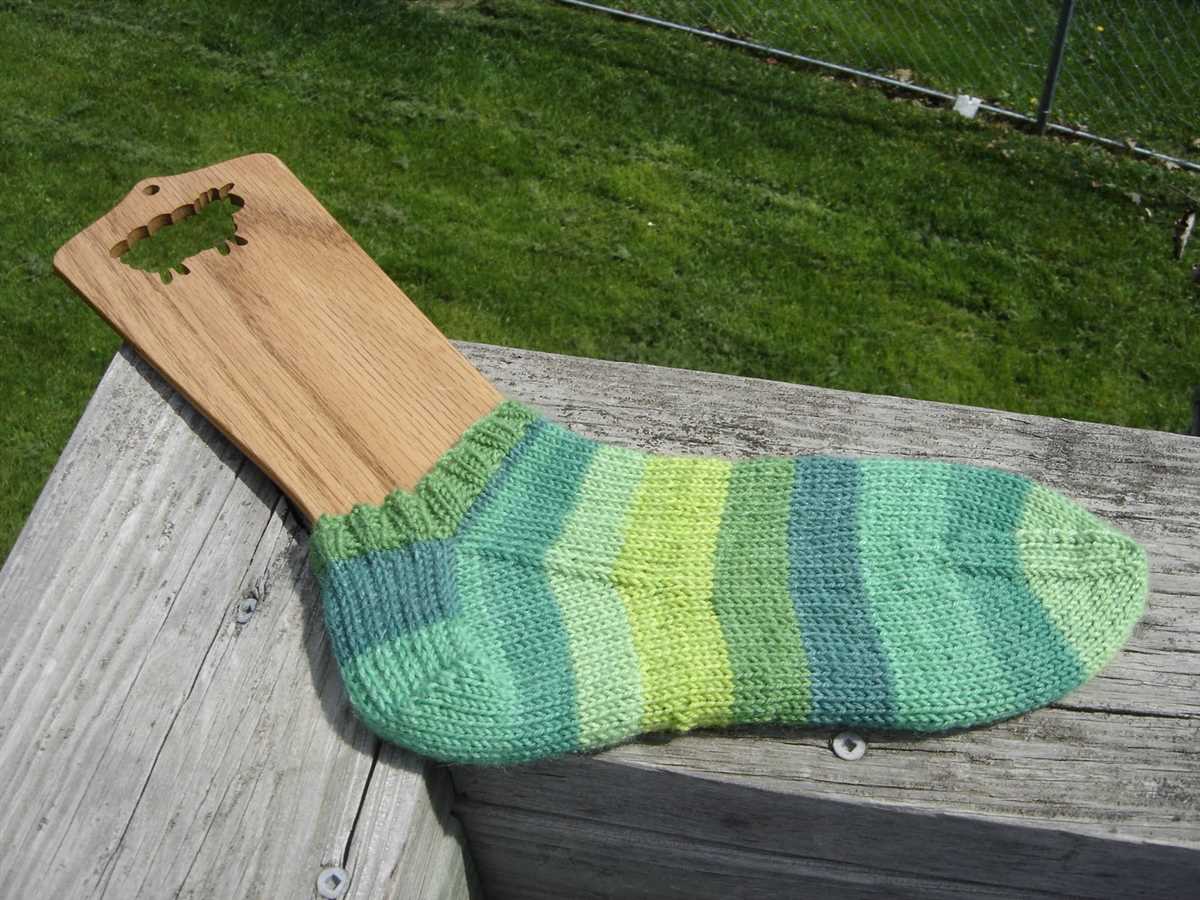
Variegated yarn, with its multiple colors and color changes, can be an exciting and fun choice for knitting projects. However, it also presents a unique challenge in working with the color changes to achieve the desired effect. Here are a few tips for effectively working with variegated yarn:
1. Consider the pattern: When choosing a pattern for variegated yarn, it’s important to select one that will showcase the color changes in the yarn. Simple patterns with minimal stitch patterns, such as stockinette or garter stitch, can allow the colors to take center stage. More complex patterns with intricate stitch patterns may detract from the variegation.
2. Swatch and swatch again: Before diving into your project, it’s crucial to swatch with the variegated yarn to see how the color changes will look in the desired stitch pattern. This will allow you to adjust your needle size if needed and ensure that the colors are distributed evenly throughout your project. Keep in mind that the color changes may appear differently in different stitch patterns.
3. Embrace the variations: One of the unique aspects of variegated yarn is the unpredictability of the color changes. Embrace the variations and allow them to add interest and depth to your project. Instead of trying to control the color changes, let them happen naturally and enjoy the beautiful surprises they bring.
4. Choose a coordinating solid color: If you’re hesitant about using variegated yarn for an entire project, consider combining it with a coordinating solid color. This can help to break up the color changes and create a more balanced and cohesive look. You can use the variegated yarn for certain sections or accents, while the solid color provides a grounding effect.
- 5. Stripes and color blocks: Another way to work with variegated yarn is to incorporate it into striped or color block patterns. You can alternate the variegated yarn with a solid color or another variegated yarn with complementary colors to create visually interesting sections.
- 6. Plan for pooling: Pooling refers to the tendency of certain variegated yarns to create patches or pools of color in specific areas of the project. If you want to avoid pooling, you can try alternating skeins every few rows or using a larger needle size to create a looser tension.
By considering the pattern, swatching, embracing variations, and experimenting with different techniques, you can make the most of the color changes in variegated yarn and create stunning and unique knitting projects.
Pattern ideas for showcasing variegated sock yarn
Variegated sock yarns are known for their beautiful and intricate color patterns, making them a versatile choice for knitting projects. The key to successfully showcasing these stunning yarns is to choose patterns that allow the colors to shine and not compete with the complexity of the yarn. Here are a few pattern ideas that will highlight the unique characteristics of variegated sock yarn.
1. Basic Socks
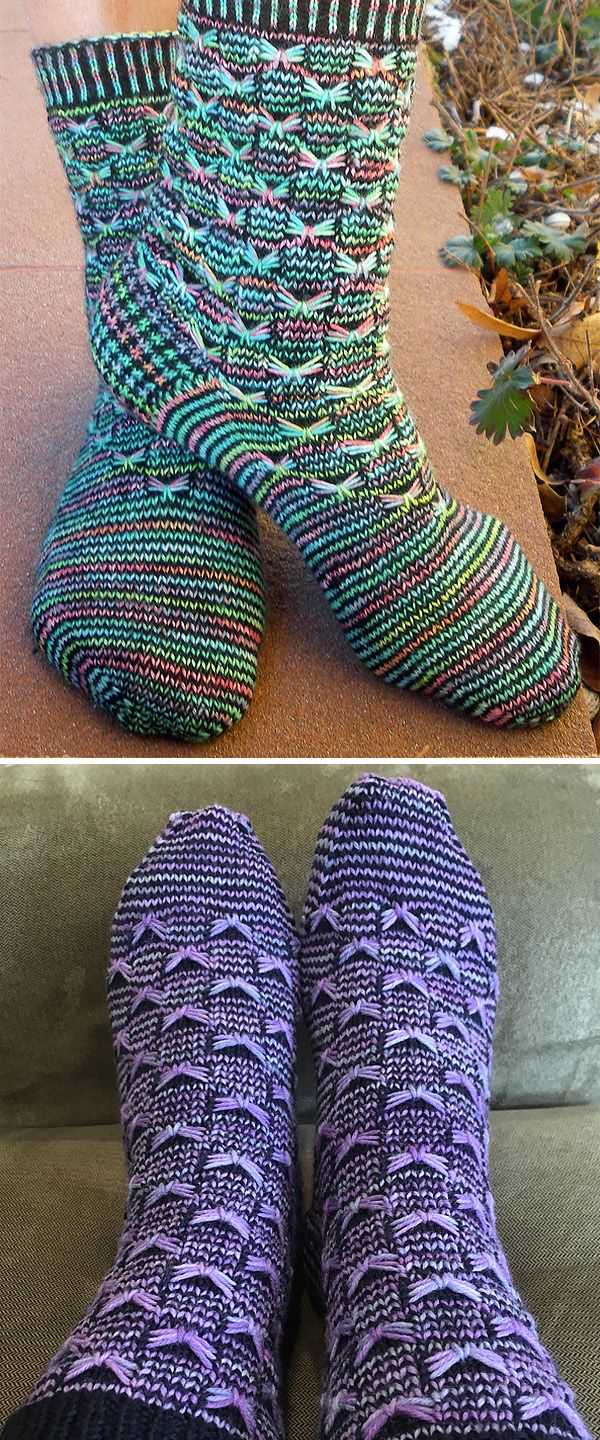
A simple pair of socks is an excellent way to show off the vibrant colors of variegated sock yarn. Stick to a basic knitting pattern such as a vanilla sock or a ribbed design to let the yarn take center stage. The self-striping or speckled nature of the yarn will create beautifully patterned socks that are both cozy and eye-catching.
2. Shawl or Wrap
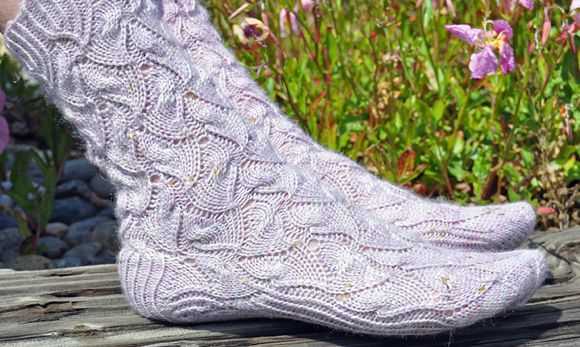
A shawl or wrap is another fantastic choice for showcasing variegated sock yarn. Choose a lace or garter stitch pattern that allows the colors to blend and shift organically. The drape and movement of a shawl will display the yarn’s unique color transitions, creating a stunning accessory that can be worn year-round.
3. Color-Block Sweater
For a larger project, consider knitting a color-block sweater using variegated sock yarn as one of the color blocks. Select a solid or semi-solid yarn for the other blocks to balance out the complexity of the variegated yarn. This combination will result in a visually interesting and modern sweater that stands out from the crowd.
In conclusion, when working with variegated sock yarn, it’s essential to choose patterns that enhance the beauty of the yarn rather than overwhelm it. Simple sock designs, lace shawls, and color-block sweaters are all excellent options for showcasing the intricate color patterns of variegated sock yarn. With the right pattern, you can create stunning and unique pieces that highlight the gorgeous hues of your favorite yarn.
Lace patterns and sock yarn: a delicate combination
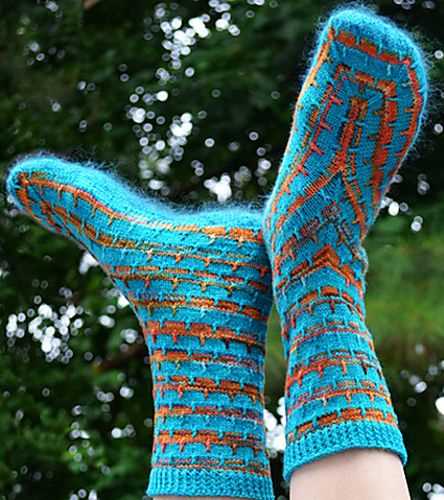
Lace knitting is a delicate and intricate technique that creates beautiful openwork designs. When combined with sock yarn, which is known for its fine weight and versatility, lace patterns truly shine. This combination offers a unique opportunity to create lightweight and breathable garments and accessories with stunning lace motifs.
One of the benefits of using sock yarn for lace patterns is the wide range of colors and fibers available. Sock yarns come in various blends, including wool, cotton, bamboo, and silk, among others. These different fiber options can enhance the drape and texture of lace, adding another level of elegance to your finished project.
Advantages of lace patterns using sock yarn:
- Lightweight: Lace patterns worked with sock yarn create delicate and airy fabrics, perfect for warm weather garments and accessories.
- Stretch: Sock yarn with a blend of elastic fibers or nylon can add stretch and improve the fit of items such as shawls, socks, and hats.
- Durability: Despite its delicate appearance, lace patterns made with sock yarn can be surprisingly durable, especially when using blends with nylon or other reinforcing fibers.
- Versatility: Sock yarn can be used to create a wide range of lace projects, including shawls, scarves, gloves, and even lightweight sweaters.
The delicate nature of lace patterns and the fine weight of sock yarn create a beautiful contrast. The intricacy of the lace stitches is accentuated by the smoothness and fine texture of the yarn. This combination allows for stunning stitch definition and intricate lace motifs that are sure to impress.
Whether you’re an experienced lace knitter or looking to venture into the world of lace patterns, using sock yarn offers endless possibilities. With its lightweight feel, stretch, durability, and versatility, sock yarn is the perfect choice for crafting delicate lace projects that are both elegant and practical.